30-second summary:
- Google is always testing new spots on the page for SERP components
- In simple terms, the #1 position in organic or paid ads does not guarantee that your paid ad listing will be visible without scrolling
- Organic position #1 reported by Google Search Console is not the actual position 1 on page
- A lot of anomalies and assumptions impact your paid and organic clicks – is there a smart way to counter this problem?
- Leading advisor and performance marketing expert, Prasanna Dhungel unravels four key insights marketers to maximize performance marketing initiatives in 2023
Over the last two decades, Google’s search engine results page (SERP) has evolved a lot. The Google SERP, which once only had organic listings now features dynamic paid ads and other organic SERP components as well.
Currently, Google SERP has many organic features like –
- People also ask (PAA),
- Popular products,
- featured snippets,
- Google MAP,
- image packs,
- videos,
- Tweets, and many more that I believe we are just scratching the surface of
Paid features currently seen on Google SERP are –
- Shopping ads,
- text ads, and
- MAP local search ads
These are some paid features advertisers should not ignore if they want to build better advertising and content strategies for maximum search marketing ROI.

Google varies the composition of SERP by keyword, geography, time of day, and device. Google is testing new spots on the page for SERP components. What does all this mean, you may ask? In simple terms, the #1 position in organic or paid ads does not guarantee that your listing will be visible without scrolling. It means that an organic position #1 reported by Google Search Console is not actual position 1 on the page. So, you have a much lower CTR than you expect, and all these impact your paid and organic clicks.
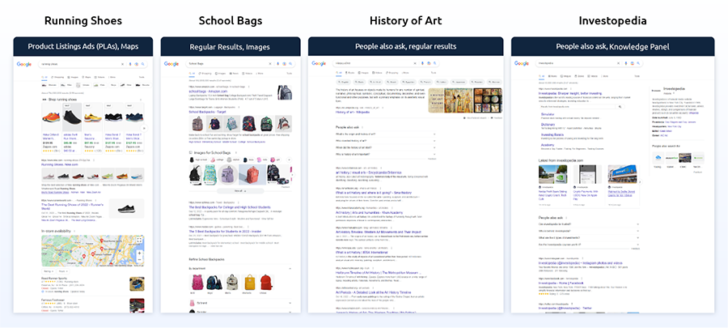
With this dynamic nature of SERP, search marketers must understand the SERP landscape and their brand’s true rank on Google vs competition. This view will enable search marketers to deploy the right paid and SEO tactics to maximize visibility and clicks.
Based on my experience and understanding of the dynamic SERP, here are four key insights marketers should focus on to maximize their performance marketing initiatives.
1. Analyze the composition of SERP for your keywords
Marketers must understand SERP features visible for their keywords. The graph below suggests that along with organic, SERP features like PAA and popular products are taking significant real estate for “apparel” and “accessories” keywords. Search marketers that are not targeting these components will miss acquiring customers in different stages of their buying journey that are clicking on People Also Ask.
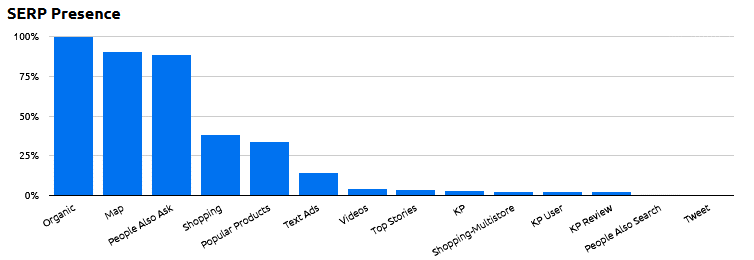
2. Monitor emerging and contracting SERP features
Marketers must understand new SERP features that have appeared and are getting popular for their keyword traffic. This helps develop a long-term advertising and content plan that targets popular SERP features.
In the last quarter, we identified Map Local Search Ads and App Install (in mobile devices) SERP features appearing in the “apparel” and “accessories” keywords. We saw growth in the popularity of PAA and popular products across many keyword groups.

3. Keep track of above-the-fold SERP features
Understanding the SERP features visible above-the-fold real estate is critical. These insights will help marketers understand the dynamics of rising and falling SERP click-through rates. You may wonder why the clicks are declining even though your average position reported on Google Reports is improving. Such questions can be answered with true ad position in SERP.
As shown in the below graph, the usual organic component in this keyword landscape has lower above-the-fold coverage compared to SERP features like PAA and popular products.
Insights like these help marketers understand the fastest gateway to the first page above the fold position. Marketers can build a holistic search strategy to correctly allocate their search marketing budget across organic and paid SERP features.
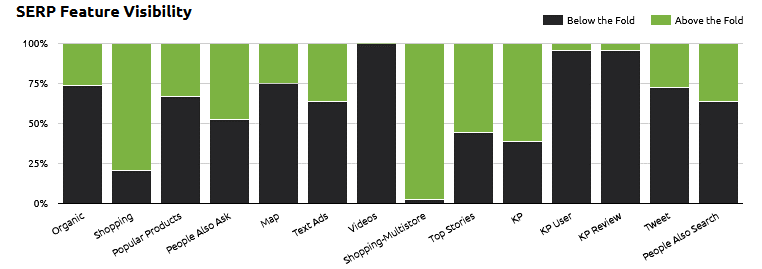
4. Monitor competitor’s through SERP features
Google is an ultra-competitive channel. You have many domains appear on Google SERP from aggregators to publishers to actual competitors of your business model. To build the right marketing tactics -it is imperative to understand the top domains by SERP features, their competitive tactics, and the SERP landscape changes.
From planning link building to acquiring secondary traffic to improving authority score to crafting advertising and content strategies – SERP-driven insights like these help you maximize search advertising performance.
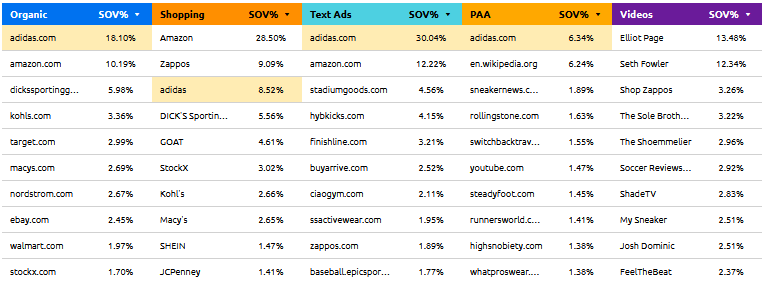
Additionally, monitoring your top emerging competitors’ tactics across SERP formats allows you to timely optimize your advertising campaigns. As shown in the graph below, Amazon has tremendously improved its Google Shopping Ads Share of Voice from May to July 2022.
When brands like this are heavily advertising in a category, marketers will need to advertise products in categories Amazon is not aggressively pushing and come back when Amazon advertising slows down.
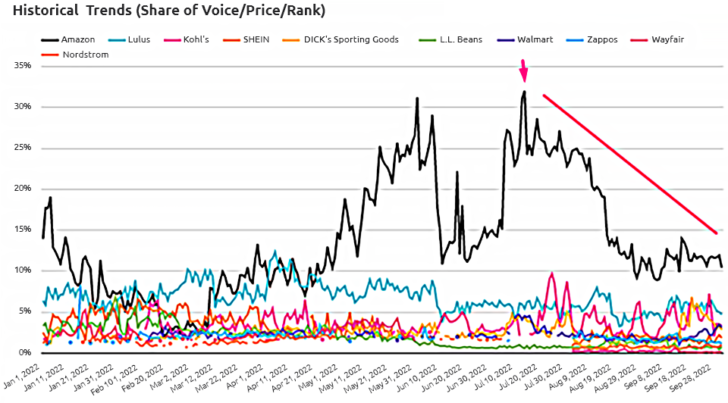
Conclusion
Google is increasingly sharing less data. Google ad data doesn’t show advertisers which low impressions may be appearing and creeping up on your CPCs. Google search console data doesn’t show true rank, and the organic rank shared isn’t representative of the actual location on the page.
Going into 2023, it is imperative for search marketers to use SERP-driven insights to gain an edge in their performance marketing campaigns.
Prasanna Dhungel co-founded and runs GrowByData, which powers performance marketing for leading brands such as Crocs and top agencies like Merkle. GrowByData offers marketing intelligence for search, marketplace, and product management to win new revenue, boost marketing performance and manage brand compliance.
Prasanna also advises executives, board & investors on data strategy, growth, and product. He has advised leading firms such as Melinda & Bill Gates Foundation, Athena Health, and Apellis Pharma.
Subscribe to the Search Engine Watch newsletter for insights on SEO, the search landscape, search marketing, digital marketing, leadership, podcasts, and more.
Join the conversation with us on LinkedIn and Twitter.
The post Google market pulse for search marketers appeared first on Search Engine Watch.




